|
Cathedral of St Vitus, Prague |
|
|
The Cathedral of Saint Vitus stands high above the city of
Prague. It took nearly 600 years to build, but has a unified look.
|
|
 |
 |
 |
 |
|
There is plenty
to see on a visit, but I’m going to focus on three saints associated with the
cathedral. St Wenceslaus The chapel and shrine of Wenceslaus I, Duke of Bohemia, (907 – 935) is a truly wonderful part of the cathedral. Although he was canonised and is now the patron saint of the Czech Republic, he was not a king, despite the popular song. He was given the title posthumously. His reputation for good works lives on. Here is an extract from the Chronicle of Cosmas of Prague c 1119: ‘No one doubts that, rising every night from his noble bed, with bare feet and only one chamberlain, he went around to God’s churches and gave alms generously to widows, orphans, those in prison and afflicted by every difficulty, so much so that he was considered, not a prince, but the father of all the wretched.’ As a young man, Wenceslaus was murdered by his evil brother; he was immediately regarded as a saint and martyr. |
|
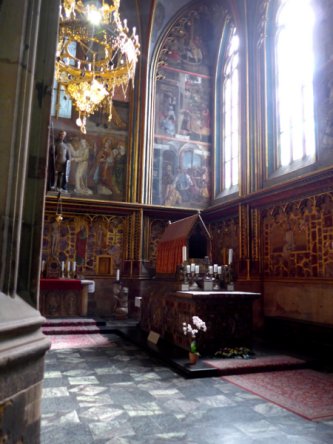 |
 |
 |
|
|
St John of Nepomuk
(1345 – 1393) was a senior churchman in Prague. He was martyred by being
thrown into the Vltava river on the orders of King Wenceslaus – not the good one
in the tomb above, but Wenceslaus 4th (1361 – 1419).
So why was he martyred? |
|
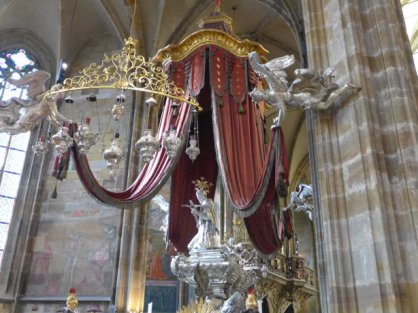 |
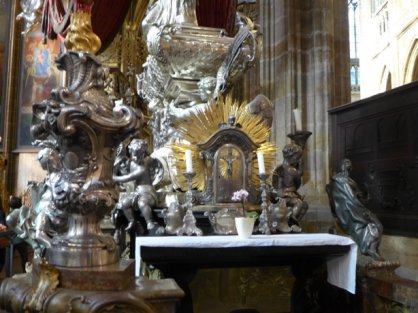 |
 |
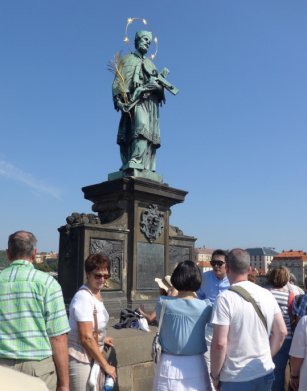 |
|
Finally, the dedicatee of the cathedral,
St Vitus. |
|
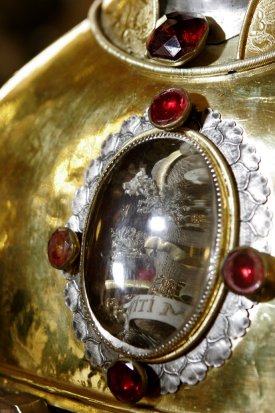 Reliquary of St Vitus |
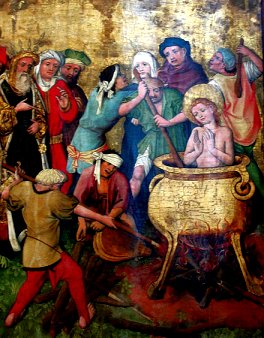 Martyrdom of St Vitus. (Anonymous, 15th century) |
|
|
|